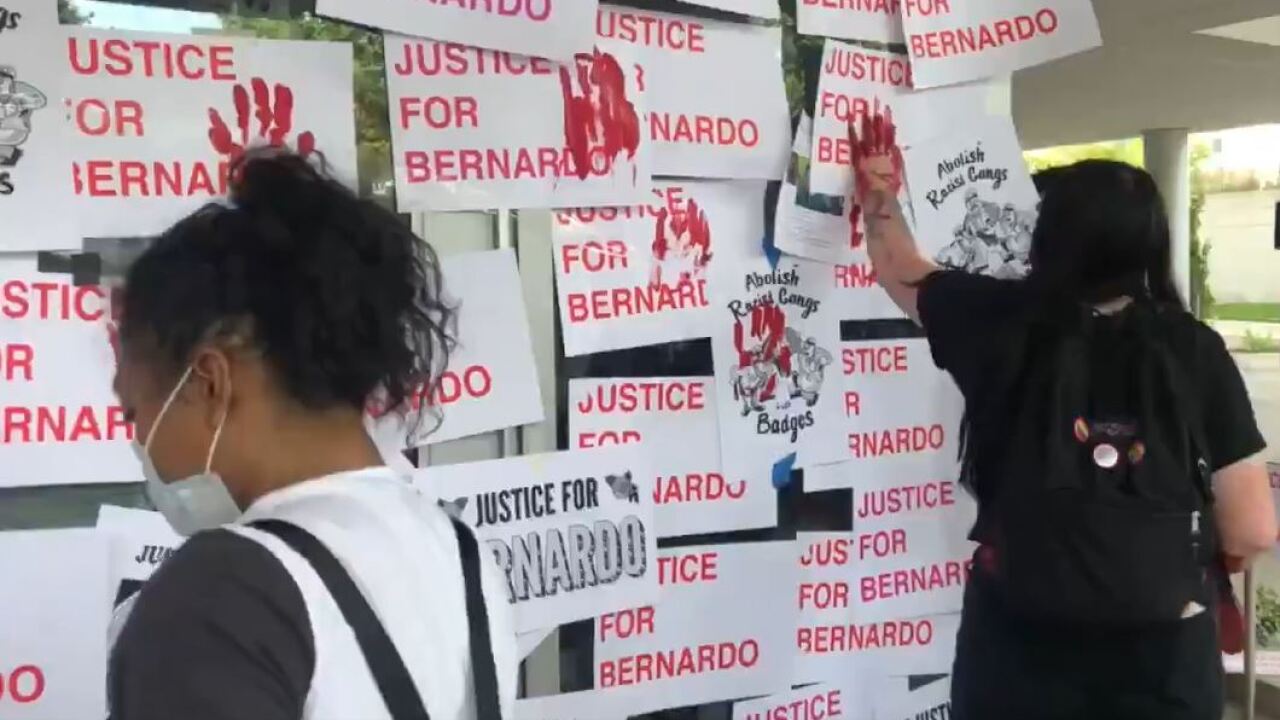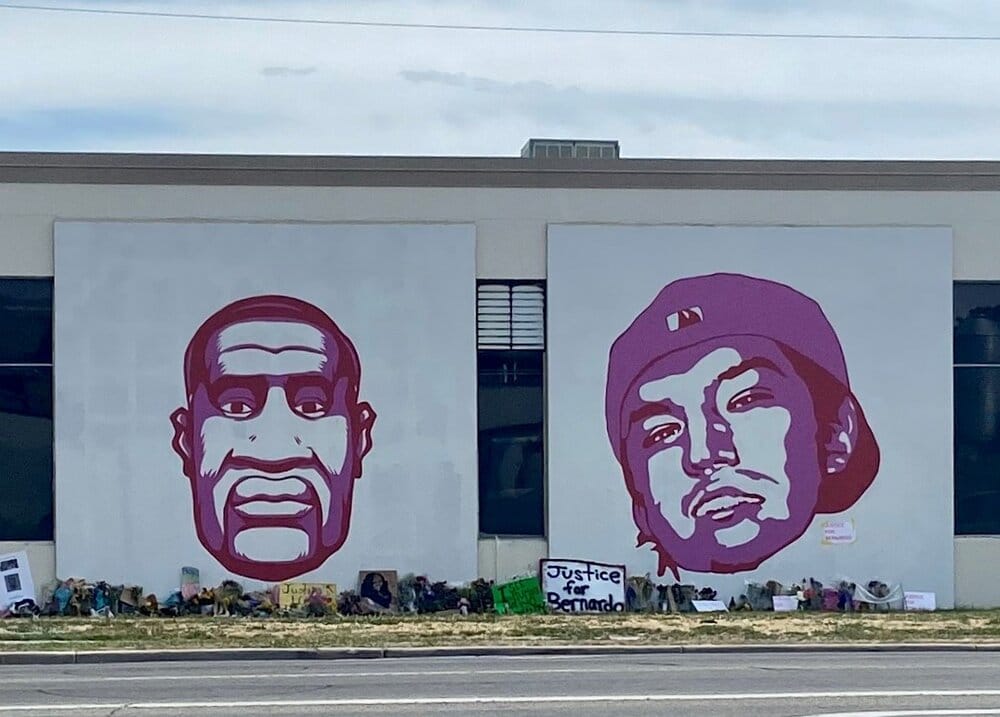
As 2022’s political season begins to roll out, Tecuani McKee was recently sworn in as a new member of the Salt Lake City Council. McKee is a member of the group called Justice for Bernardo. Bernardo Palacios-Carbajal, according to KUER’s reporting on McKee’s swearing-in, was essentially executed in cold blood by Salt Lake City police officers on May 23rd, 2020 in downtown Salt Lake City on 300 West and 900 South.
McKee is quoted characterizing Bernardo’s death as a “state-sanctioned execution.” KUER doesn’t refute or mention any of the facts of the case, likely because this story wasn’t about Bernardo’s death. KUER’s story was about all of the new members of the Salt Lake City Council, most of which have dark skin and/or are members of the LGBTQ community.
Bernardo’s tragic death, and its subsequent investigation by Salt Lake City Attorney General Sim Gill’s office, have drawn a great deal of criticism by Justice for Bernardo supporters. Gill’s office was vandalized with red paint subsequent to his investigation which found all police officers involved in the Carbajal case declared innocent of any wrongdoing. A portion of Salt Lake City’s Latino community is characterizing Berardo as an innocent martyr who wrongfully died at the brutal hands of police officers who were out to murder dark-skinned people.

What is missing from this narrative, which has resulted in dozens of protests, murals and shirts indicating that “Justice for Bernardo” clothing is that Carbajal was being sought out by police officers because he had twice committed an armed robbery that evening, holding his victims at gunpoint and demanding their money with a loaded weapon.
The tragic nature of the death of 22-year-old Carbajal was that he refused on multiple occasions (at least 30 requests) by police officers to drop his weapon. The foot chase that ensued was around the Trails Gentlemen’s Club and across the street at a storage facility where body-cam footage shows police officers yelling over and over, “Drop your weapon! Drop your gun!” Carbajal is seen stumbling, obviously intoxicated. He doesn’t appear to be a threat, but he is completely ignoring the officer’s requests.
Carbajal then drops his weapon, picks it up and continues on two occasions where officers did not shoot but continued to chase. The third time Carbajal drops his weapon, he is poised in a manner where he could have possibly fired his weapon at police officers. This was when three officers opened fire on Carbajal and killed him with 35 shots fired. Fifteen shots hit Carbajal.
To characterize this incident as a “state-sanctioned execution” is beyond inaccurate, but local media doesn’t want to report this because it’s not popular in our current environment to defend police officers. We live in the “Defund the police!” era.
The investigation proceedings can be watched on YouTube, showing all of the available body-cam footage showing how officers exhausted every opportunity for Carbajal to give up and drop his weapon. The Justice for Bernardo’s website is still calling for the release of all of the body cam footage, but all of the footage has been released.
The death of Carbajal occurred just three days before the killing of George Floyd in Minneapolis, Minnesota. Carbajal’s death provided additional fodder to a narrative that police are seeking out and murdering innocent people of color.
In fact, there have been many tragic deaths of both dark-skinned and white people at the hands of police officers in Utah. There has been an ongoing mural project around the corner of 300 West at 800 South block near where Carbajal was killed. The dozen or so faces are those of young men, mostly of color — but also Dillion Tayor, who was white — died due to police officers firing their weapons when lesser measures could have been taken to spare their lives. The lives of many of those young men, including Bobby Duckworth and Dillion Tayor, who did not have firearms, could have been spared had officers responded appropriately.
But 22-year-old Bernardo received ample warnings and requests to stop. Unfortunately, a taser or pepper spray could not have been used to contain Carbajal prior to him deciding to drop his weapon. Officers must be able to assume that every gun is loaded and ready to fire.
Officers need to protect their own lives and safety and make split-second decisions to keep themselves and the public safe.
Newly-elected City Council Member Tecuani McKee’s decision to make her victory on a council seat as a referendum to reinforce the notion that police are out to murder dark-skinned people is unfortunate. Officers at SLCPD are not white supremacists out to murder innocent victims. The Salt Lake Tribune has found that Utah officers do disproportionately fire their weapons at dark-skinned people and minorities, but the fact is that the majority of deaths at the hands of officers are white people.
Latinos make up some of the hardest-working and most capable citizens in Utah and in Salt Lake City. But this is not a story of the police vs. the Latino community. This is a very sad story of a very young man who had too much to drink, who then made a series of very bad decisions, and was tragically killed due to his failure to surrender to the police.
If you feel that we have this wrong, please watch the investigation proceedings which show all of the available bodycam footage from that evening. And feel free to send your comments.
YOU MAY BE INTERESTED IN READING:
The Culture War in America and in Utah
Lex Scott, the Founder of Black Lives Matter Utah, is Sick of Protesting
Getting to the Heart of the Black Lives Matter Movement
Black Lives Matter Utah: This is the Calm before the Storm
Racial Equality and Police Reform in Utah
No-Knock Search Warrant Costs Utah Police Forces $60K in Payouts to Victims
Dog Fatality Follow-Up: Police Are Haunted by Geist
Harassment by West Jordan Police
Salt Lake City Police Department answers questions about recent police harassment
cottonwood heights residents protest against police harassment





